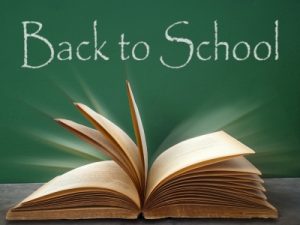Different Learning Styles
You’ve probably heard that everybody learns differently. These different learning styles might be broken down to visual, auditory and kinesthetic, or seeing, hearing and touching. Either way, educational experts will tell you that learning styles are a reality, and that the best kind of teacher will know how to adjust their methods to accommodate every kind of student, instead of assuming that the way the teacher learns is the best way for everyone. Learning styles influence how students of all ages process and retain information, and most teachers try to combine methods to be able to reach as many children as possible, no matter how their brains are wired.
1. Visual Learner
 If a student has trouble following directions or retaining information simply from being told, they might be a visual learner. Visual learners are typically good at memorizing what they see on paper rather than listening. The reason for teachers to use pictures, charts, and diagrams in their lessons is so they can appeal to visual as well as auditory learners. It’s also a good reason to write important points down on the blackboard as you teach them. Visual learners also benefit from flashcards and taking notes more than other students, which means there are a variety of study suggestions that teachers can make to help them absorb material.
If a student has trouble following directions or retaining information simply from being told, they might be a visual learner. Visual learners are typically good at memorizing what they see on paper rather than listening. The reason for teachers to use pictures, charts, and diagrams in their lessons is so they can appeal to visual as well as auditory learners. It’s also a good reason to write important points down on the blackboard as you teach them. Visual learners also benefit from flashcards and taking notes more than other students, which means there are a variety of study suggestions that teachers can make to help them absorb material.
2. Auditory Learners
While visual learner’s benefit more from reading and notes, auditory learners are more geared towards lectures and discussions. When a teacher puts the students into groups, this can often be for the benefit of auditory learners, who can learn a lot from talking about the material with others in the class. For younger children who are learning sentences and parts of speech, it can help them to repeat words or learn to read aloud. Auditory learners might be slower readers, simply because it’s harder for them to retain things visually, which is why they benefit from directions that are told to them instead of just written down.
3. Kinesthetic Learners
Possibly the least common and also the most misunderstood, kinesthetic learners have trouble sitting still because they constantly need to engage in their learning environment. They love touching things and can be hyper. Kinesthetic learners are actually easier to deal with at an elementary level, because you can present them with so many physical activities such as art materials, clay, and puzzles. Later on, they will excel at science fair projects and other assignments where they can build and create something. It might be harder to always accommodate kinesthetic learners, but their way of approaching the world is just as valid.
4. Other Learning Classifications
There are other things to consider besides these three basic learning styles when teachers want to know how their students process information. One of the most important is whether the student is a social or solitary learner. Some children benefit from the group and some don’t at all – it can be challenging to find room for both of these styles in a classroom. There are also logical students and emotional students, and a teacher has to be well-rounded in their methods to appeal to both.
Even though we all have our strengths when it comes to learning, the fact that teachers use a combination of techniques to reach everyone’s individual style means that students can learn to think in different ways. Educational psychologists believe that teachers can develop methods that work for everyone at the same time. A teacher who knows how to engage with her students will be successful, regardless of the differences we all have.
See Also:
- So Long, US Dollar As World’s Reserve Currency
- What are High Yield Bonds?
- Germany Will Exit Euro
- Is Bernanke Stuck in a Housing Time Warp?
From Amazon:
Mary Keller writes for several education sites and recommends researching online education degrees to further your education.
Image courtesy of nuttakit / FreeDigitalPhotos.net
